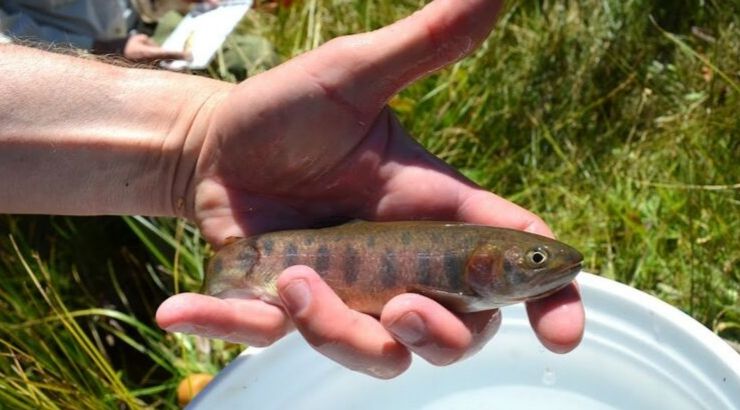Animals
One of North America’s Rarest Fish Makes Incredible Comeback From Edge of Extinction
“This is a huge and historic moment,” a California Fish and Wildlife spokesman said.

(TMU) — In a major victory for wildlife conservationists, a rare trout species is swimming once again in its native habitat decades after it became one of the first animals ever to be listed as “endangered” under the Endangered Species Act of 1966.
Biologists hope that their reintroduction to the Silver King Creek below Llewelyn Falls in California’s Alpine County can allow the Paiute cutthroat trout to thrive once again and repopulate its natural habitat.
California Fish and Wildlife (CDFW) spokesman Peter Tira told KCRA:
“This is one of the world’s rarest trout … This is a huge and historic moment.”
The Paiute are attractive, shining creatures with a “purplish iridescent hue” and none of the body spots that are common to the 14 subspecies of cutthroat trout, explained CDFW senior environmental scientist Bill Somer. The senior researcher said:
“The color is kind of hard to describe and really hard to photograph … You can only see how unique they are if you catch them and hold them in your hand.”
On Wednesday, the Paiute cutthroat trout was reintroduced to its natural habitat as various state and federal researchers and dignitaries watched.
Roughly 30 of the fish were plucked from Coyote Valley Creek in the wilderness of the eastern Sierra Nevadas before they were placed in containers that were strapped to pack mules, who carried the trout 2 miles west into Long Valley, reports Associated Press.
For thousands of years, the trout lived in a stretch of the cold water creek, which lies at about 8,000 feet elevation (2,440 meters), before they began to rapidly disappear during the 1920s.
A summary posted to the CDFW website explained:
“The introduction of non-native trout into their historic range was a major cause of the PCT’s decline.”
Other threats to the Paiute cutthroat trout included disease, overfishing, interbreeding and competition with non-native trout.
Interestingly, the species was saved by pure accident in the early 1900s when Basque sheep herders transported a few of the fish into a previously fishless portion of Silver King Creek above the Llewellyn Falls. The falls then acted as a natural barrier that prevented non-native fish from entering the stretch of water while keeping the Paiute genetic pool pure.
Since the Paiute began receiving federal protection in 1967 as one of the first animals listed under the Endangered Species Act, efforts to preserve and restore the species have enjoyed a significant boost.
The act is credited with saving the California condor, the bald eagle, grizzly bears, whooping cranes, American alligators and myriad other animals and plants since President Richard Nixon signed it into law in 1973, establishing a federal listing system of “threatened” and “endangered” species. Over 1,600 species are currently protected by the law, which seeks to prevent the extinction of native species.
However, efforts to restore the trout were placed in jeopardy when California became gripped by a drought in 2011 that continued for six years.
Somer explained:
“The drought was a setback. Without snow cover in the winter at elevation, the stream literally freezes solid from the bottom up.
It’s a major problem for trout throughout the West.”
Another problem was the issue of non-native fish, which officials dealt with by treating the stream and its tributaries with rotenone.
Next year officials plan to send another mule-borne shipment of trout to Silver King Creek to ensure that the population reaches 2,500 and becomes self-sustaining.
Biologists say that it will be the first time that a federally threatened species is returned to its natural habitat in greater numbers than its original population.
By Elias Marat | Creative Commons | TheMindUnleashed.com
Typos, corrections and/or news tips? Email us at Contact@TheMindUnleashed.com
